Half an hour outside downtown Tokyo, this park is an underrated gem for autumn colors【Photos】
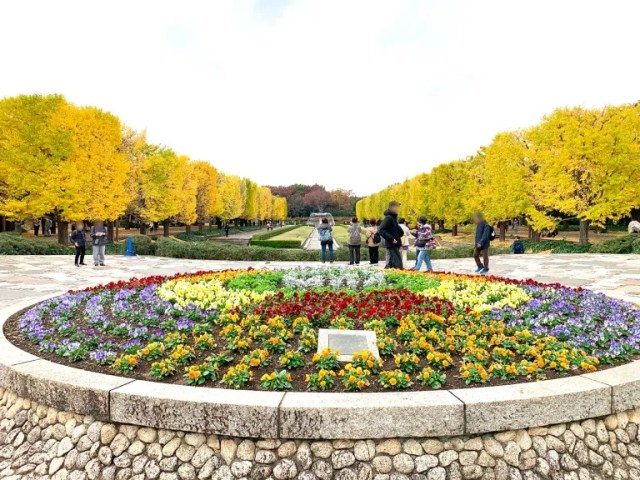
Showa Park is a great reason to make the trip out to Tachikawa.
Tachikawa is one of those parts of Tokyo that most Japanese people have heard of, but not so many have visited. One of the cities that are included within the Tokyo Metropolis boundaries, Tachikawa is about 30 kilometers (18.6 miles) west of downtown Tokyo, and in a lot of ways it has the feel of a regional county seat. The neighborhood right around Tachikawa Station is moderately developed, with a handful of skyscrapers, shops, and restaurants, but it pretty quickly turns into quiet suburbs that are less dense than those closer to downtown.
▼ Tachikawa Station
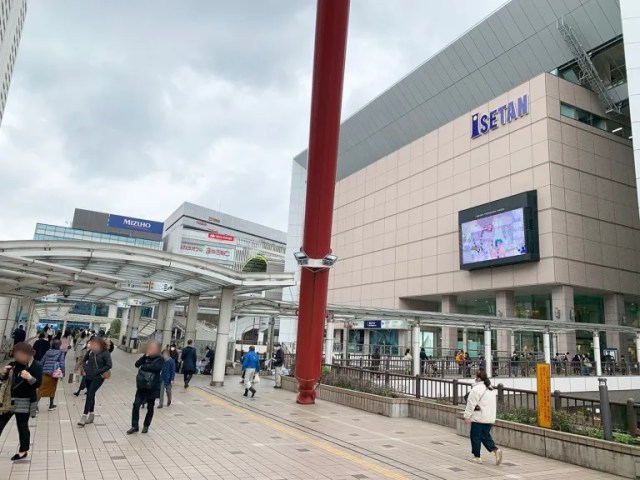
Basically, Tachikawa’s got the necessary conveniences and amenities for daily life, and the station is a local rail hub where a few different lines converge, but unless they live in Tokyo’s western outskirts area and pass through Tachikawa on their way to work or school, it’s not really somewhere most Tokyoites make a point of going to. So our Japanese-language reporter Seiji Nakazawa was surprised to see people online saying that Tachikawa boasts some very beautiful places to see the autumn leaves.
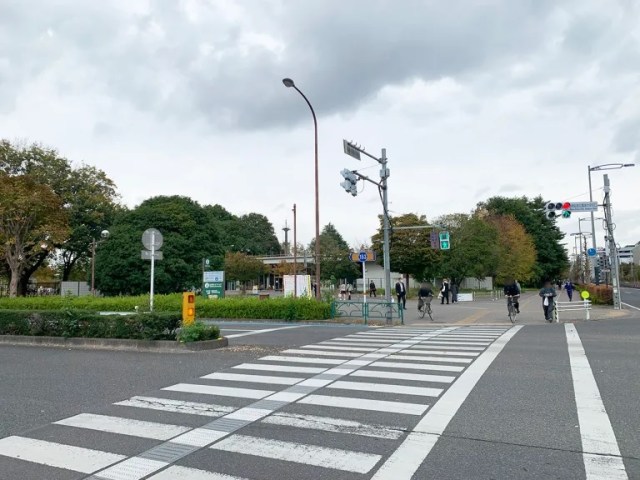
Actually, those places are all part of the same location, Showa Memorial Park. In particular, Seiji had heard that it’s a great place to see gingko trees, so he hopped on the train to go see for himself. This was Seiji’s first time going to the park, as his previous trips to Tachikawa were mainly for a midnight factory odd job he’d worked long, long ago, putting together some sort of electronics that he can’t quite remember.
It’s about a 40-minute train ride from Shinjuku Station to Tachikawa, and from the north exit of Tachikawa Station it’s roughly 10 minutes on foot to Showa Park’s Akebono Entrance, following the route shown here.
But since this was Seiji’s first time, he wanted to enter through the park’s Tachikawa Entrance, since he figured the name meant it was the main entrance. In actuality, the two gates both funnel into the same gate, so it doesn’t make a difference, but the Tachikawa Entrance is right in front of Nishi Tachikawa Station, so you can get off the train there instead of at Tachikawa Station if you want a shorter stroll to the park.
▼ Showa Park’s Tachikawa Entrance
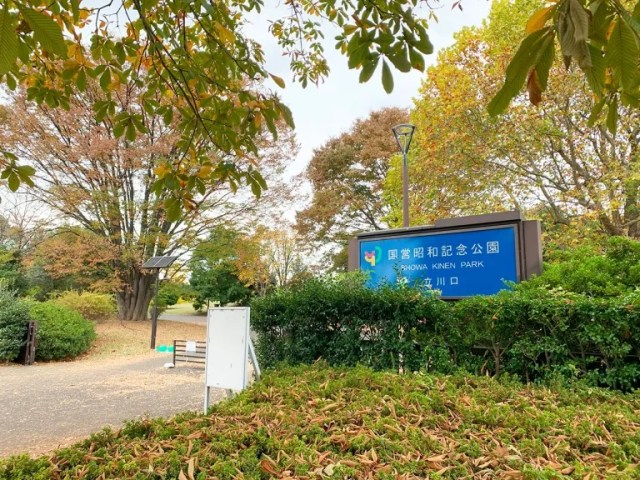
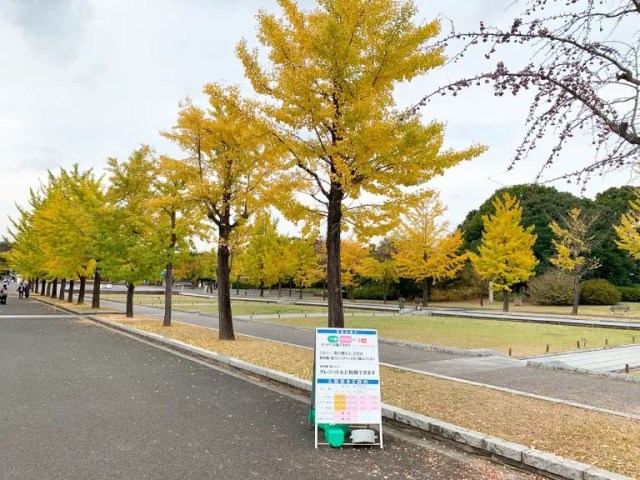
Right away, Seiji saw leaves that were showing their autumn colors, but this wasn’t the spot he’d heard about. Further inside the park there was supposed to be a footpath where the branches of the ginko trees form a tunnel overhead, and that’s really what he’d come to see.
Still, he was already struck by how pretty, and how big the place was. Having been in downtown Tokyo just an hour ago, it felt liberating to see the sky without the view being blocked by buildings or partitioned by powerlines.
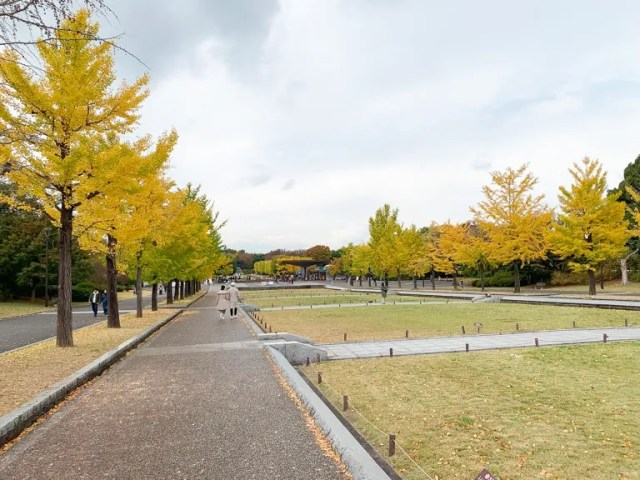
By the way, that photo above is still technically outside the park, as that structure way in the back is the ticket gate.
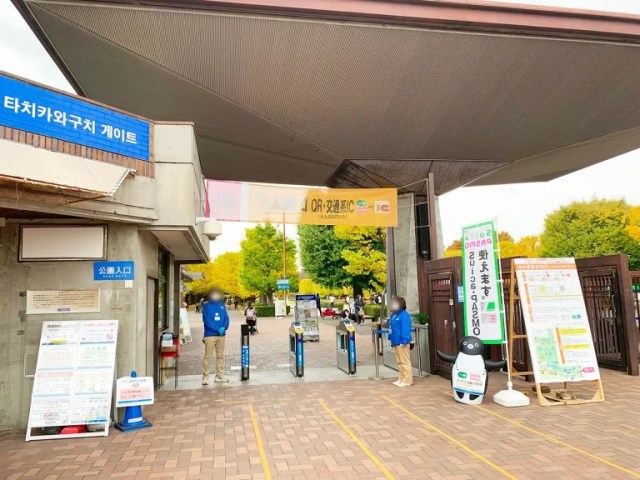
Tickets are sold by a bank of vending machines, with adult admission 450 yen (US$3) and children middle school-age and younger free. You can also pay by prepaid e-money train cards like JR’s Suica, which is what Seiji did.
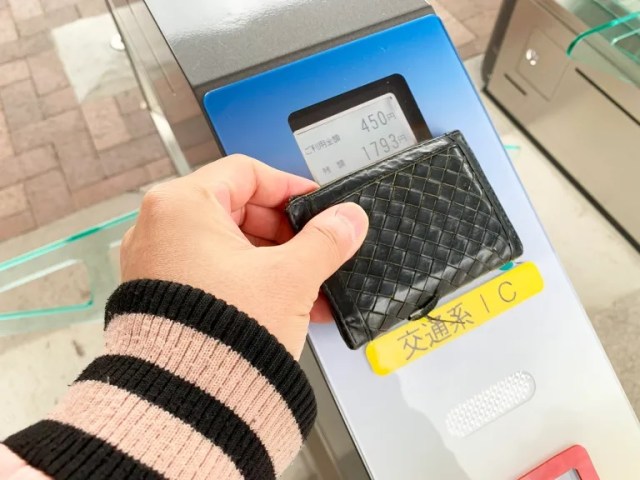
He tapped his card, stepped through the gate, and…
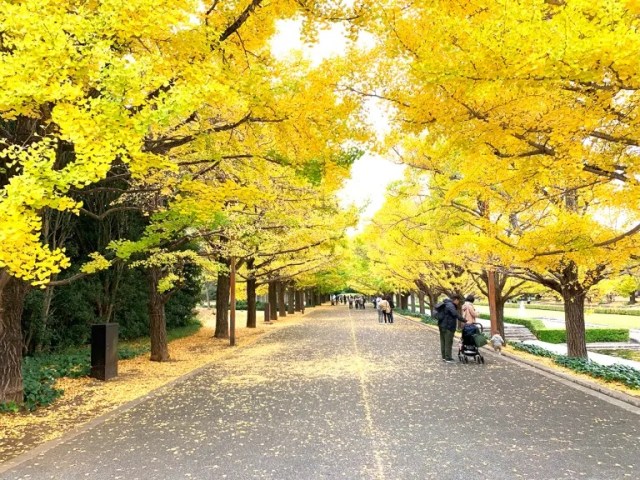
…immediately had his breath taken away by the gingko tree tunnel he’d come to see!
Usually when people think of gingko trees in Tokyo, they think of Gaienmae, in downtown near the Aoyama and Harajuku neighborhoods. Compared to Gaienmae’s swanky cosmopolitan sophistication, Showa Park has a much more low-key vibe, but that also makes it all the easier to relax and take everything in at your own pace.

But this is far from all there is to see at Showa Park, which is a gigantic 180-hecatre green space, or, to use Japan’s favorite layman’s unit of area measurement, as big as 39 Tokyo Domes.
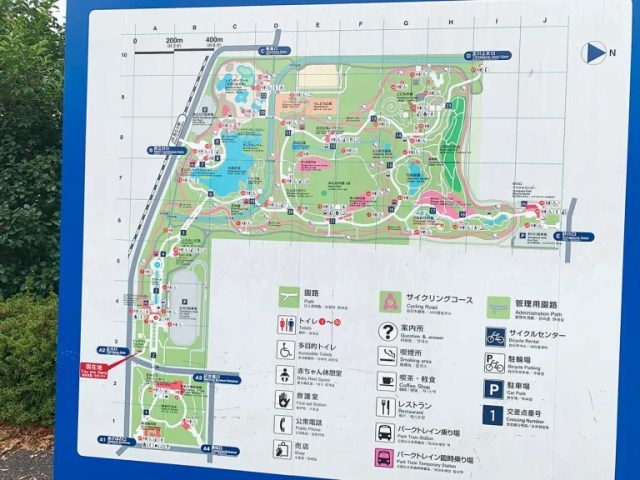
There’s so much to see that the park staff periodically prepares and gives out a “Midokoro Map,” (midokoro meaning “best time to see”), highlighting flora that’s reaching its prime viewing season.
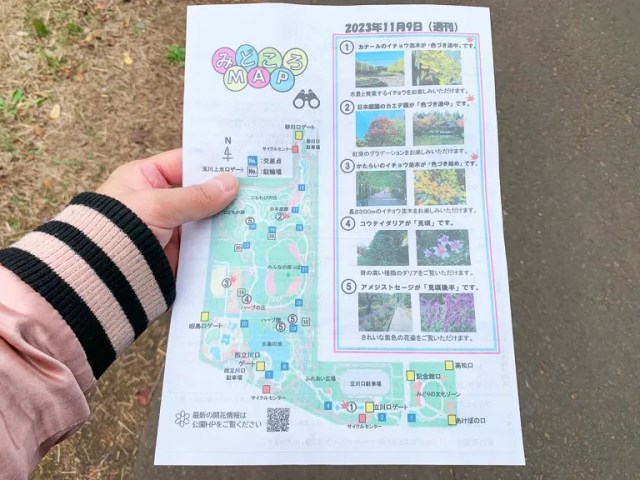
The gingko tunnel is right inside the entrance, but Seiji’s next stop was the Katarai Icho Namiki, another gingko-lined path in the west part of the park, past one of its children’s play equipment areas.
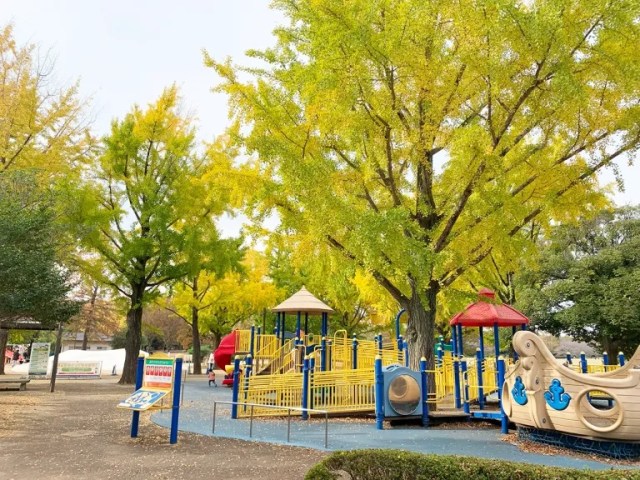
On the day of Seiji’s visit, the leaves here hadn’t changed color as much as on the trees near the entrance, but there was a noticeable touch of yellow to their green, making them almost glow in the sunlight.
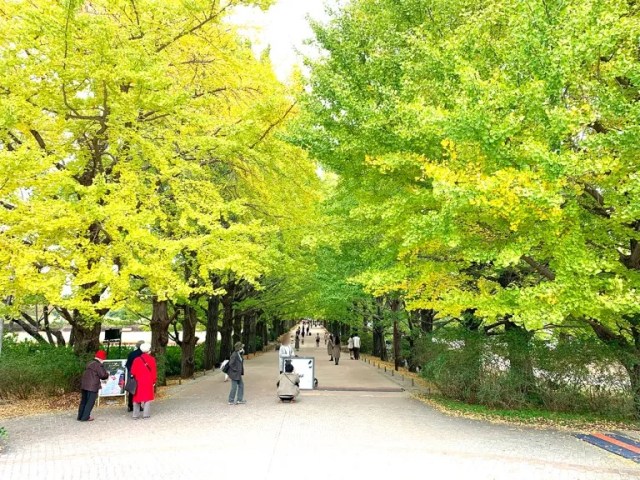
Even if they hadn’t reached their most beautiful color yet, they were still photogenic enough that Seiji saw many people snapping pictures, and he imagines that when they do turn gold, the view from this bench at the end of the path must be a sight to see.
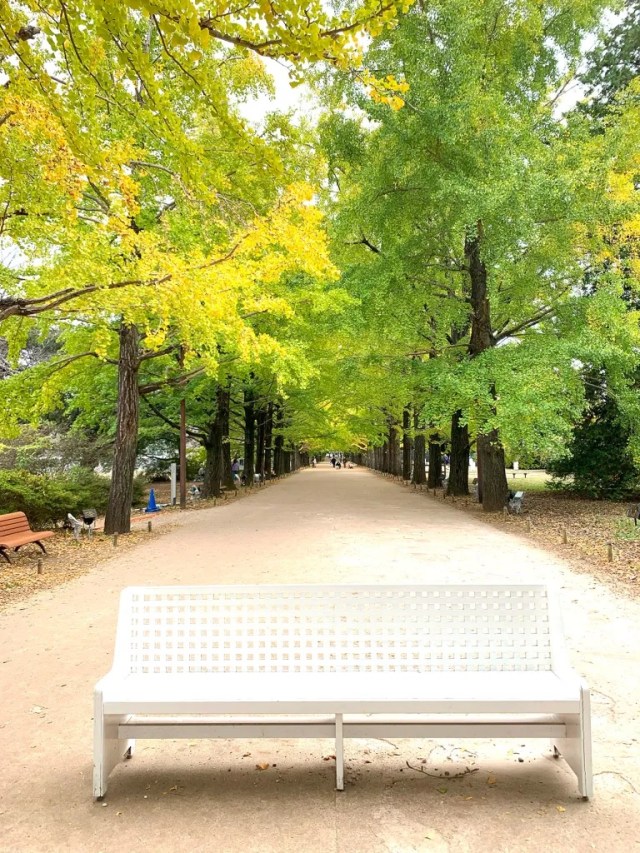
The third spot that’s supposed to be great for seeing fall leaves inside the park is its Japanese garden section, which sits at the side of a pond.
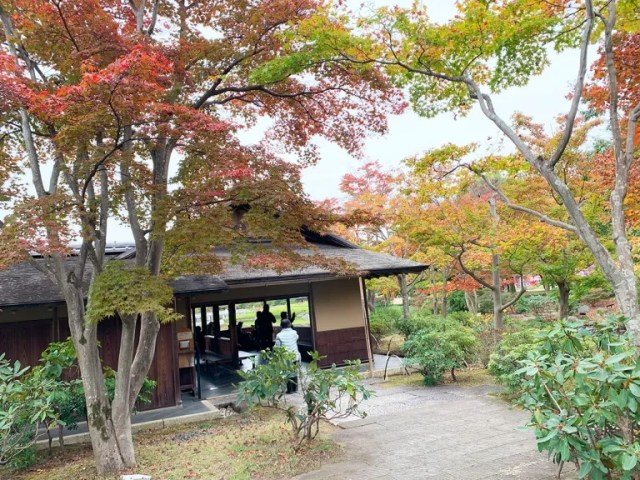
Here there’s a mix of reds and yellows, though on this day it was still pretty early to see much of those hues. Even with plenty of green left on the trees, though, the garden is still elegantly enchanting.
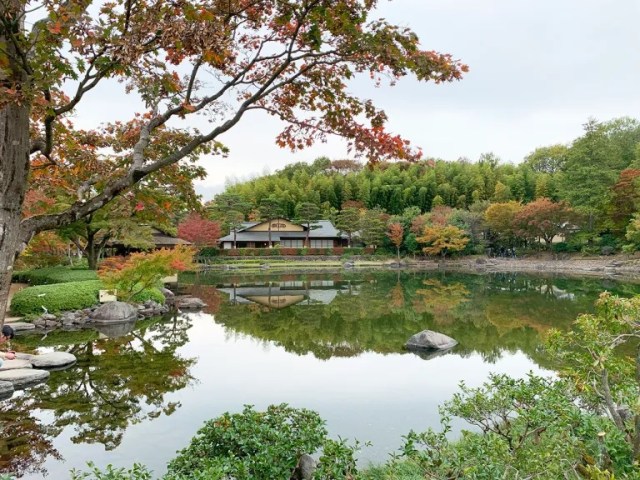
Seiji even discovered a fall color vantage point on his own. Adventurous guy that he is, when he stumbled across the park’s Pyramid of the Sun structure…

…he couldn’t resist climbing to the top…
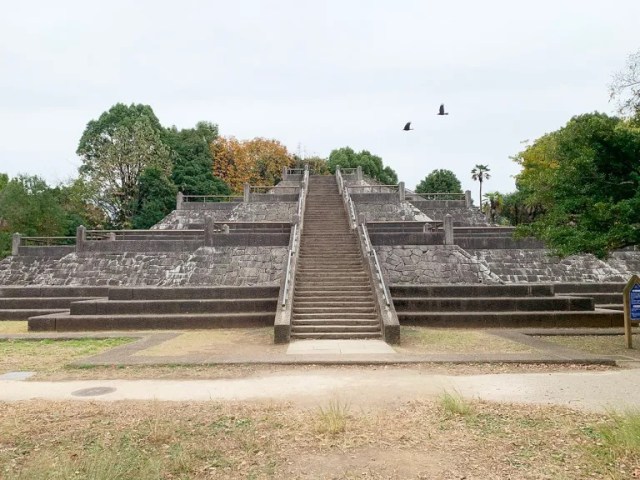
…which let him enjoy things from yet another perspective.

With Japan having had an unusually warm autumn this year, we’re also getting a later start to the fall colors, so ideally Seiji would have timed his visit to Showa Park a little later. On the plus side, that means there’s still time for the rest of us to check out this underrated autumn outdoor attraction this year, as the colors are expected to reach their peak around 7 to 14 days from now. And if your afternoons are already booked, until November 26 the park will be having a special light-up event with access allowed to certain parts of the park after sundown from 4:30 to 8 :30.
Related: Showa Memorial Park official website
Photos ©SoraNews24
● Want to hear about SoraNews24’s latest articles as soon as they’re published? Follow us on Facebook and Twitter!
Credit:

0 comments:
Post a Comment